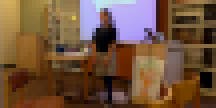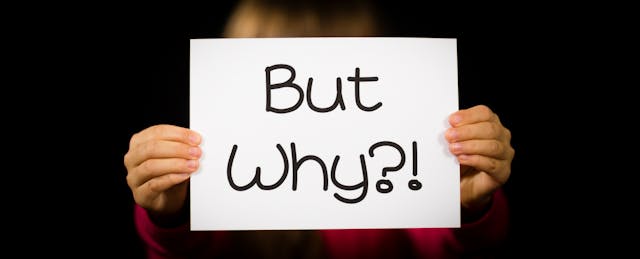I was driving to work listening to Dan Carlin’s political podcast “Common Sense.” Carlin was explaining how to make history relevant to all students, whether it's the history of hip-hop music, the evolution of the coffee industry or a person you pass on the street. What stayed with me that day: everything and everyone has a history—but history doesn't matter to students if it's not relevant to their own lives.
As a high school history teacher with 15 years of experience, this shouldn't have come as a surprise, but something about the way Carlin explained it awakened me that day. I've always used the power of personal connection to teach historical thinking skills such as critical analysis, synthesizing information and recognizing bias, but that day I realized I hadn't given students the freedom to decide what history they wanted to learn and how they wanted to learn it—and Carlin says choice is key. I was determined to create a project that would help me provide more choices for students. I called it “Big History.”
This was six years ago, when I was teaching at Mount Vernon Presbyterian School (MVPS) in Atlanta, Ga. MVPS is an independent school that serves close to 1,000 students in Pre-K through 12th grade. The mission of my school was to prepare students for an ever-changing world—bold, I know. We were given freedom to implement non-traditional practices such as design thinking, while maintaining those that are tried and true like document-based essay writing. As an educator, I felt empowered, and I wanted to create that same feeling for my students.
I was a ninth grade World History teacher at the time and since I taught every ninth grader at the school, I’d be able to implement the change I was making with my new project across the entire grade. The goal of the project was to allow students to self-select a topic they were interested in researching (E.g., fashion, warfare, sports) and share about it as if they were an educator. The project would culminate in a presentation of the information they learned using a format that allowed them to demonstrate their personal strength. I was a genius.
After sharing some basic parameters for the project, students began working. One young lady studied the history of fashion and presented her findings with a fashion show that brought the audience through the evolution of fashion from the prehistoric era to the classical time period. Another student investigated warfare and created a video game to demonstrate how the Greeks battled various city-states. While many students enjoyed the freedom to investigate their interests and share with their peers, there were, as always, some students who struggled to complete the assignment. Anya was one of them.
It surprised me that Anya was struggling. She was a top student. As an eighth grader, her sole mission was to receive the highest grades in her class so she could be recognized on Awards Day. This was a lofty goal since Anya’s class was an academically competitive group.
Anya thought outside the box at every juncture. This was a quality I admired about her, but it was causing some roadblocks for our project. Anya was not seeing the amazing revelation I had around teaching history. She pushed back constantly to gain an understanding of why we were doing this project, and she rarely accepted my responses. No matter how much I tried to explain my why, or support her in identifying what she wanted to research, we couldn’t find common ground.
I encourage students to push back and ask questions, but it was getting to a point where frustration was creeping in for both of us. Before our frustration escalated, she sent me an email about an “aha moment” she had. Her issue was not the Big History project. She was struggling to understand why we do projects the way we do in school and she said that stemmed from an even broader question she was noodling on: why is school set up the way it is? After spending a good amount of time talking about education and schools, it hit us: This was her research question for the project.

Anya studied various school models like High Tech High and the Watershed School in Boulder, Colo. She conducted deep research and had so much to share, but when it came time to decide on a medium for her presentation, she had an internal struggle. Anya didn’t think it was right to give a traditional presentation to showcase her research on innovative school models that were exploring new ways of teaching and learning. She didn’t want to share information that her classmates could find if they searched on Google. Instead, she wanted to use her research to spark changes at our school.
I proposed the concept of redesigning projects at our school, which I had been thinking about for awhile. Her constant line of questioning and all we had learned together through her research prompted us to take action together. Anya prototyped a structural change—an ideal schedule that would allow the time and flexibility for the kinds of projects that, in her view, were indicative of an optimal learning environment. She collected data and brought charts to class that displayed her findings to provide evidence for her claim that things needed to change, and she brought multiple schedule options to think through. Her ideal schedule carved out time for student collaboration, off-campus experiences and time for teachers to serve as mentors for students.
While most students presented for five minutes, Anya’s presentation was 45 minutes long with a 40-page slide deck. Teachers and students from other classes flocked in to watch her share after hearing so much about her project, and three people recorded her presentation.

Anya’s project led to some changes in my class, impacted elements of her personal education path and created change within our school. In my history class, her project paved the way for Genius Hour, a period of time dedicated to independent project work. Anya and a few other students continued to research the transformation of education. She even went on to found a student led-magazine, Trailblazers, which focused on the education transformation movement. MVPS created an Innovation Diploma program, a school-based startup that gives students the opportunity to develop as young innovators by working with various industry leaders and creating solutions to company challenges. Anya was, of course, a founding participant.
Anya’s fierce demand to understand why school and projects are designed the way they are also led to some personal changes in my own practice. The experience allowed me to see myself as a mentor and helped me recognize that everyone in the room has something to teach. It showed me that to push the limits of education, I have to try new things, listen to my students and trust them to make smart choices.
Today, Anya is a Stamps Presidential Scholar at Georgia Tech and a member of their Grand Challenges Program, which allows her to spend time collaborating with peers and teachers to solve sustainable solutions to a problem she is passionate about. She is a business administration major, though in her studies and Grand Challenges work, she continues to look at education with a desire for radical change.
What started as pushback from Anya, which I almost misconstrued as disrespect, ended up building a strong connection that has remained. I had no idea Anya would have such an impact on my teaching over the past six years. In fact, we still talk regularly and are currently co-writing a book about the impact relationships have on education.
Today, I am the STEAM Interdisciplinary Specialist at the Atlanta Girls’ School, where I’ve applied many of the lessons I learned from Anya and her Big History project. Every time I co-create a new lesson plan or design a project, I channel Anya and ask "why?" Why are we doing this work? Why does it matter? Asking myself these questions pushes me to think outside the box like Anya always does and that has made me a stronger teacher.


